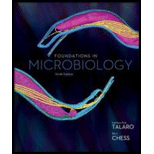
Concept explainers
Suggest some possible physiological benefits of allergy.
To determine:
The possible physiological benefits of allergy.
Introduction:
An allergy is an exaggerated, inflammatory immune reaction that occurs in response to antigens that should normally be harmless.
Explanation of Solution
In some people, the immune system reacts to antigens that would normally be harmless. Such a hypersensitivity reaction is called an allergy. Respiratory and skin allergies are the two common forms. Respiratory allergies involve symptoms like repetitive sneezing, runny or watery nose, and watery eyes. Skin allergies manifest as lesions on the skin with itching.
The possible benefits of allergies are that they prevent the entry of irritants or pathogens in the environment, and even cause them to be expelled from the body. Allergic reactions are believed to have first evolved to target chitin, which is a major part of fungi and parasitic worms. These are therefore protective reactions - with inflammation that increases the flow of blood with immune cells to control the invading object, and physiological reactions to expel the irritant and clean up the tissue.
Allergies are protective reactions that are meant to remove invading objects, control pathogens and clean up the respiratory and digestive passage, or the skin. They become dangerous in some people when they go out of control.
Want to see more full solutions like this?
Chapter 16 Solutions
Foundations in Microbiology
 Human Physiology: From Cells to Systems (MindTap ...BiologyISBN:9781285866932Author:Lauralee SherwoodPublisher:Cengage Learning
Human Physiology: From Cells to Systems (MindTap ...BiologyISBN:9781285866932Author:Lauralee SherwoodPublisher:Cengage Learning


